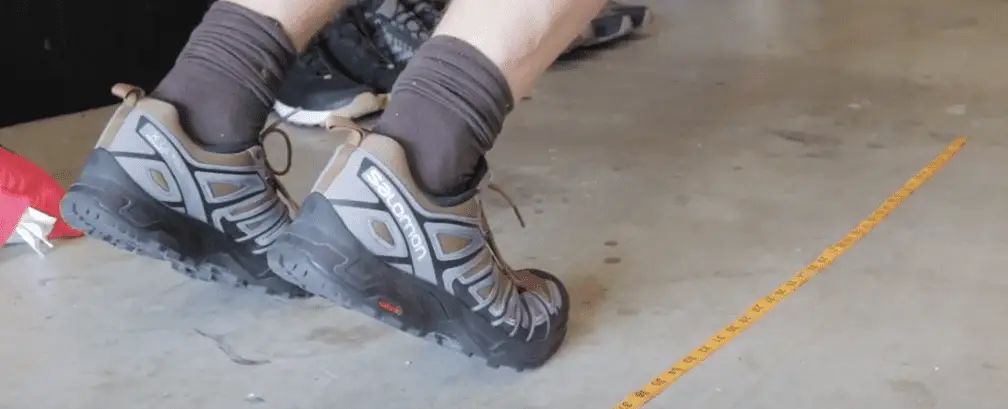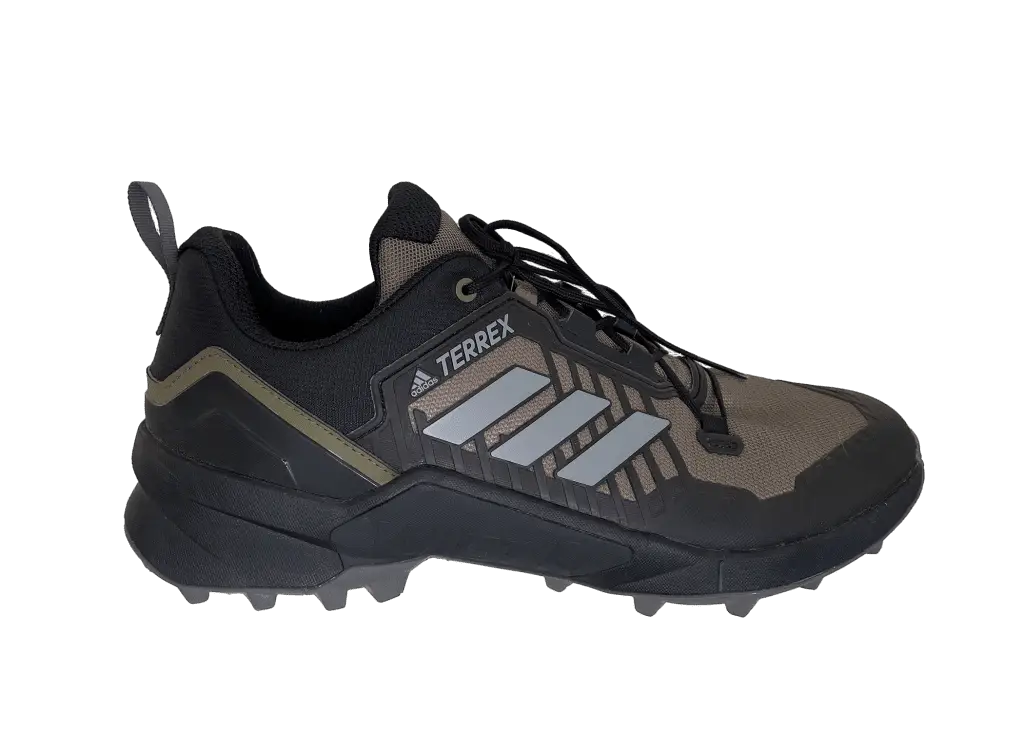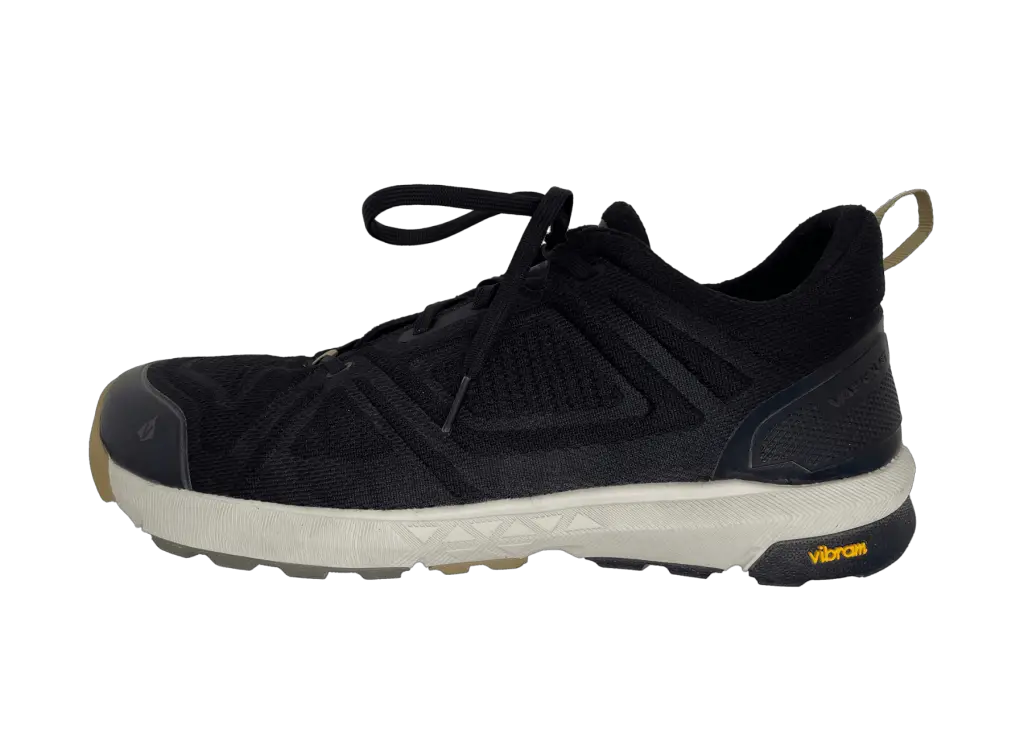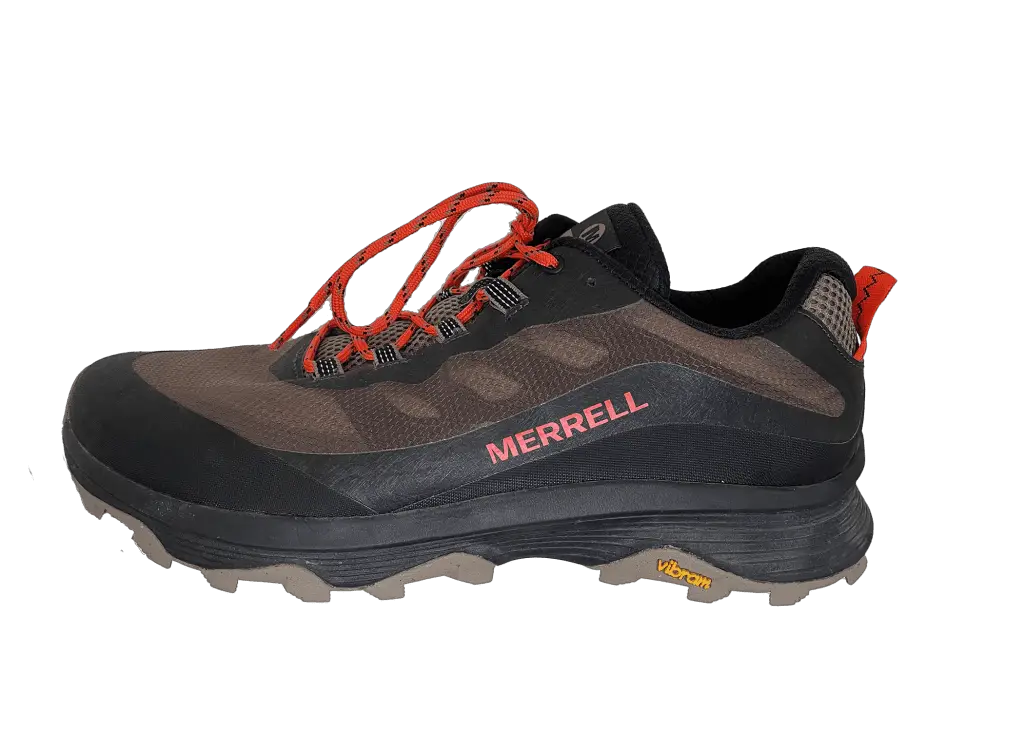At Dusty Hikers, I purchase hiking shoes and test them against each other. One of the tests compares the relative stickiness of the outsoles of the shoes. A shoe’s ability to grip a surface translates directly into its ability to provide traction.
A shoe’s outsole provides grip on a surface relative to the outsole’s ability to adhere or stick to that surface. The materials used in creating the outsole, as well as the tread pattern of the shoe, will affect how well your shoes grip a surface.
Of all the testing I do on hiking shoes, I think the grip test is perhaps the most important. Our shoes protect our feet and are essential for moving effectively over various terrain types. Having grippy shoes will help you hike more efficiently but can also help you avoid slipping and causing injury.

The rubber compound for outsoles with the most grip I have ever tested is the Megagrip™ by Vibram. I recently tested a pair of shoes that uses the Megagrip™ compound. Check out my review of the Vasque Satoru Trail LT hiking shoes. I wear them every day.
What Gives a Shoe Grip?
So we know that the shoe’s outsole is what grips the terrain. But how exactly does the outsole do this?
A shoe’s grip is determined by a series of factors, including the tread pattern on the outsole and the relative hardness or softness of the material used to make the outsole. Stiffer, deeper lugs are more suited to softer terrain, while softer, shallow lugs are more suited to harder terrain.
The most crucial factor in the grip of your shoes is the materials used to make the sole. Nearly all modern hiking shoes use rubber compounds for the sole. Manufacturers of hiking shoes either produce their own in-house compounds or use third-party providers such as Vibram.
When engineering the outsole for a shoe, designers have a few considerations to make.
- Softer rubber compounds translate into more contact with the surface of the terrain, providing more opportunity for the shoe to grip the trail. Softer compounds may also wear out more quickly.
- Harder rubber compounds will provide greater stability, especially on hard surfaces like stone. Harder compounds will also tend to wear out more slowly.
- The tread pattern will have a significant impact on the outsole’s performance for both grip and traction.
- Fewer, deeper lugs are more suited to softer terrains such as mud or snow.
- Smaller but more numerous lugs provide a greater surface area for grip on various terrains.


How Does Shoe Traction Work?
Traction is what allows you to move forward while walking or running on a surface.
A shoe has more or less traction based on the effectiveness of the outsole to avoid slipping as you move. The two most important factors are the tread pattern of the outsole and the material used to make the outsole. The outsole material should adhere to the terrain as much as possible.
It is more complicated than this. Think of the outsoles on soccer shoes designed for natural turf. They will typically have between 12 to 15 cleats or lugs. This solution works great for natural turf, but if you play on a synthetic surface such as AstroTurf, you can see how the lack of surface area of the outsoles in contact with the ground will become a huge problem.
The same is true for hiking shoes. Certain types of outsoles work best in certain types of terrain.
I have found the Merrell Moab Speed hiking shoes to perform well across various terrain types. Check out my complete review here.

Is Traction the Same as Grip?
Shoe grip and shoe traction are closely related concepts, but they are not identical.
Traction is the ability of the outsole to avoid slipping as you step and move in a direction and is determined by the tread pattern, the grip of the outsole material, and the terrain. The outsole’s ability to stick to the terrain is grip.
When you take this concept to its extreme, you can imagine a shoe with excellent grip but poor traction. Imagine that you have shoes with a soft, sticky rubber outsole that has a very smooth surface with essentially no tread pattern.
These slick-bottom shoes would be perfectly fine on a dry, cement surface. However, if you were trying to scramble up a steep trail with loose dirt, gravel, and debris, you would not have adequate traction.
Now imagine a shoe with aggressive lugs made from a very slick, hard rubber compound. You can see how these shoes might provide adequate traction on the steep trail with loose material but would not work well on dry cement.
Another shoe I recently tested is the Adidas Terrex Swift R3. They have deep lugs but a less-than-sticky outsole material. Check out my full review here.
Which Sole has the Best Grip?
I have tested several hiking shoes for grip and have found that certain compounds for outsoles are much better than others at gripping surfaces. The table below contains shoes I have tested personally for grip.
Most shoes with soles made from Vibram’s Megagrip™ compound will provide the best all-around grip on various terrains and weather conditions. It consistently outperforms other compounds from Vibram and rubber compounds from other manufacturers.
| Rank | Compound | Shoe Tested | Notes |
| 1. | Megagrip™ by Vibram | Vasque Satoru Trail LT | Small, shallow lugs provide excellent grip on many surfaces. |
| 2. | Ecostep™ by Vibram | Merrell Moab Speed | Not as good as Megagrip, but close, and the outsoles contain 30% recycled materials! |
| 3. | Quantum Grip™ by Merrell | Merrell MQM Flex 2 | Very close in performance to Ecostep™ by Vibram. Normal wear after a year of use. |
| 4. | Contragrip™ by Salomon | Salomon X-Ultra Pioneer Aero | A disappointing performance on smooth surfaces. Very slippery on smooth, wet surfaces. |
| 5. | Continental™ | Adidas Terrex Swift R3 | The least amount of grip of these five shoes. Deep lugs will provide traction on the loose ground but will not perform well on smooth surfaces such as stone. |
For the latest round of testing, check out my YouTube video.
Picking the Right Shoe for a Specific Trail
So now let’s put it all together.
If you are planning a hiking trip to an area with well-groomed trails where you plan to encounter plenty of stone or rock, then you should go with a shoe that has an outsole that is very grippy but that perhaps does not have aggressive lugs. The Merrell Moab Speed would perform very well in these conditions. Support my blog and check out the pricing for these shoes.
If, on the other hand, you plan to hike on unimproved trails with steep, muddy sections, then you need deeper lugs and a stiffer rubber compound. In this scenario, the best shoe I have tested would be the Adidas Terrex Swift R3. Support my blog and check out the pricing for these shoes.

